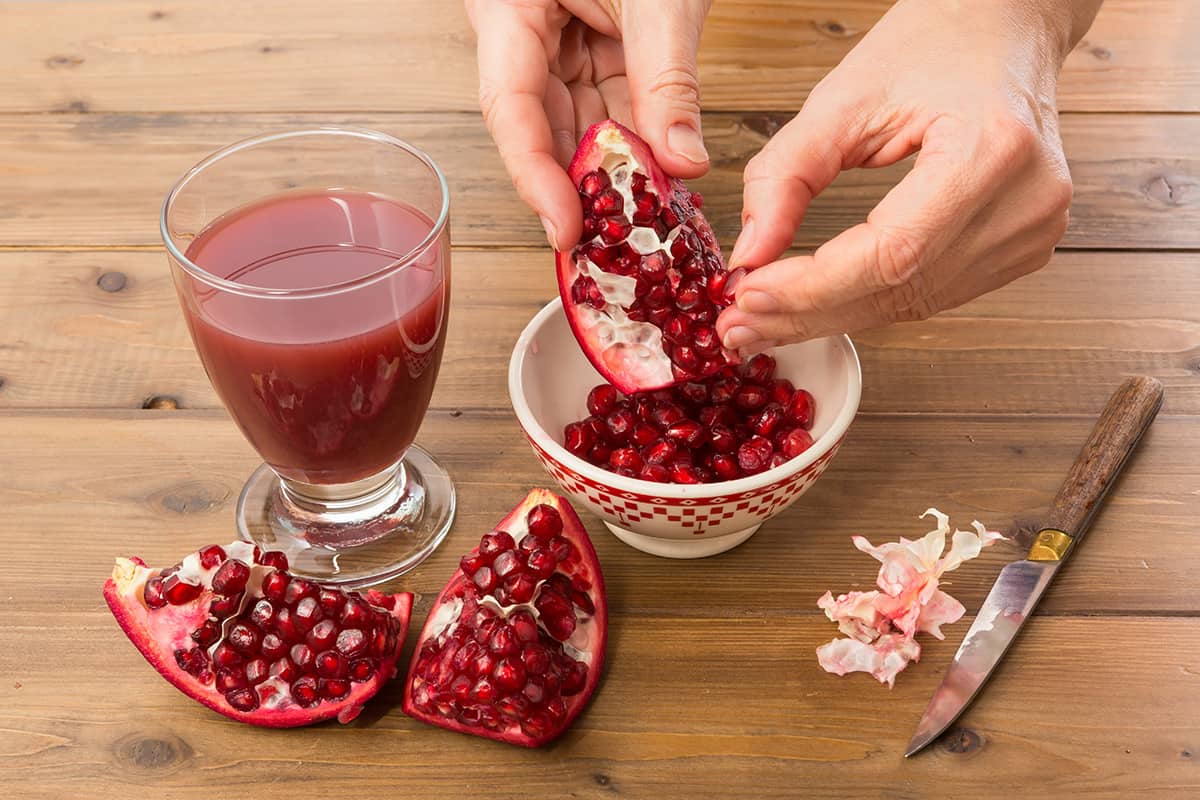Pomegranates have earned a reputation as a nutritional powerhouse, but they aren’t exactly the easiest fruits to seed or prepare.
With a taste of tartness combined with a sweet undertone, pomegranate reminds me of cherries or cranberries. They literally burst with flavor.
But to fully enjoy these unique treats, you need to know how to best seed and prep them. If you can’t eat them all, knowing how to store them is vital. Ready to learn more?
A Bit About Pomegranates
Pomegranates are one of the world’s oldest cultivated fruits. Thought to have originated in Persia, they were taken to the Mediterranean, Africa, Afghanistan, and China, gaining in popularity along the way.
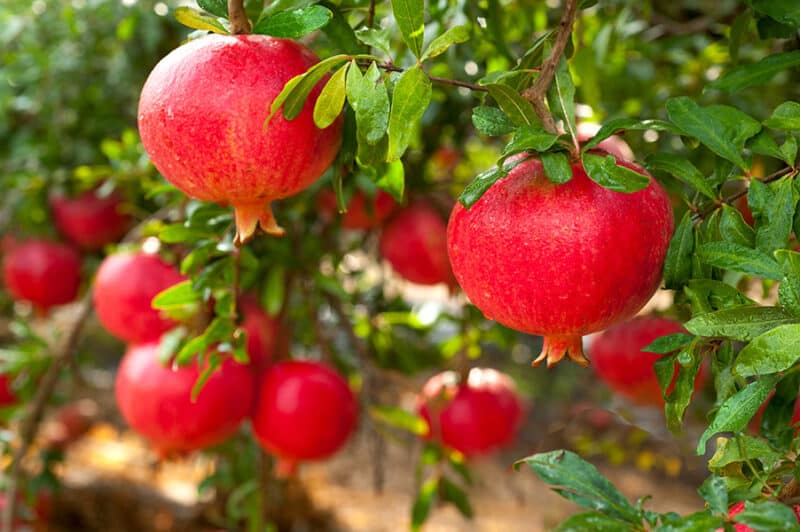
Introduced by Spanish missionaries to California in 1769, they now produce 90 percent of the United States’ pomegranates.
Pomegranate is medieval Latin, meaning apple of many grains. If you’re familiar with pomegranate, you’ll know that it’s a perfect description of this wonderfully flavorful, juicy fruit.
Speaking of grains, those little juicy pieces inside the fruit are known as arils. Each aril has a seed inside. That dry, off-white bit inside the fruit that holds the arils is known as the membrane.
Different varieties of pomegranates may have smaller or thicker membranes, and the arils may be big and juicy with a tiny seed, or they might be small with a large seed.
There are plenty of pomegranate varieties that you can grow or find at your local grocer, though you harvest and store them all the same.
‘Sweet’ is my favorite variety because it’s sweet, as the name suggests. The skin is pink or light red, preceded by lovely copper-red blossoms.
‘Granada’ is medium in size with deep crimson skin. The arils are sweet and juicy without being overly syrupy. This is one of the most common commercial pomegranate varieties grown in California.
‘Early Wonderful’ is red-skinned and large, it can be a little tart. ‘Balegal’ is pale-skinned with large fruit that gets about four inches in diameter. It has a lovely, sweet flavor.
‘Crab’ has medium to large fruit that can be a nice balance of sweet and tart. The skin is bronze, and the arils are deep red.
‘Utah sweet,’ also known as ‘Dixie sweet,’ produces pretty pink flowers. The fruit is sweet, and the seeds are quite soft.
If you want to learn more about growing pomegranates, check out our growing guide.
Harvesting and Choosing Pomegranate
If you have your own pomegranate tree (or access to one), then you need to know exactly how to harvest your fruits before you can seed them.
Pick pomegranate when it is fully red and slightly soft to the touch. It takes about six to seven months from flowering until it’s time to pick the fruit, so be patient.
As pomegranates ripen, the skin can crack. Check your tree often and pull any cracked fruits. Eat those right away because they don’t store well.
Pomegranates don’t ripen off the tree as some other fruits do, so you want to wait until they are completely ripe to pull them.
Cut the pomegranate off using a pair of clippers, rather than pulling or twisting. Cut close to the branch, so the whole stem comes with the fruit.
If you’re getting your fruit at the grocery store, you need to know what to look for.
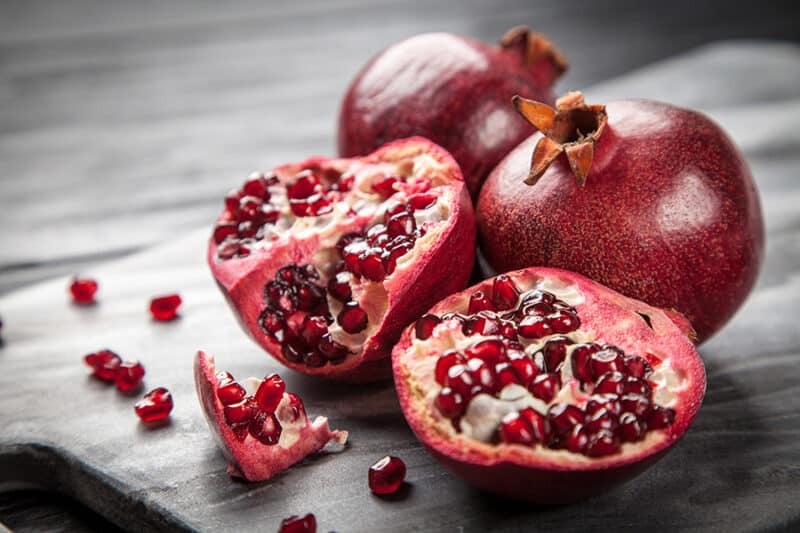
Fruits that have wrinkled skin are drying out inside. Avoid those. Pick a pomegranate that is plump and feels heavy in your hand. It should give slightly but shouldn’t feel soft or mushy.
Brown spots can indicate aging or it could be a bruise. Avoid those, as well.
Getting the Pomegranate Seeds (Arils) Out
Once you’ve gotten them off the tree or bought a bunch at the grocery store or market, it’s time for the real challenge: how do you seed a pomegranate?!
Method One
The first method is messy, but it’s a fun way to snack on the fruits instead of popcorn or chips while watching a movie.
Make a small nick in the stem of the fruit and pull the fruit apart. This exposes the aril segments inside.
The fruit tends to separate naturally at the segments between the membranes.
Pick out the seeds individually and pop them in your mouth one at a time.
You’ll need to continue peeling and pulling as you go, and you’ll probably squirt juice here and there along the way, so keep a moist towel handy to wipe your hands.
Like I said, it’s messy, but it’s a great snacking option.
Method Two
The second way is more common. Simply slice the fruit in half or quarters to expose the arils. Then, gently tease them out with your hands and into a bowl.
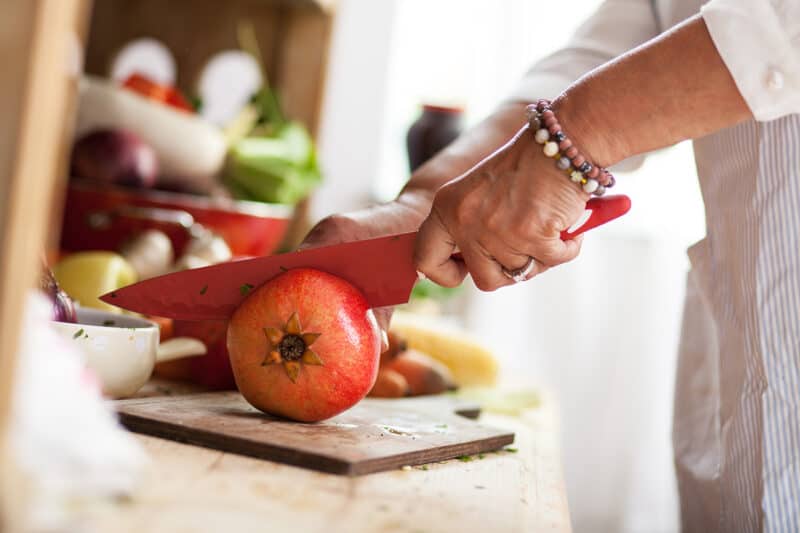
You can also hold one half over a bowl filled with water and rap the back of the fruit with a wooden spoon until all the seeds fall out. You probably won’t get everything out, but most of the arils will fall.
Then, strain the stuff off the top of the water with a slotted spoon, which is where the membrane and other waste will float. Pour out the water and drain the arils.
The problem with this method is that you end up slicing through some of the pomegranate seeds, so it’s wasteful (but quick). You also make a bit of a mess, with seeds and juice flying everywhere.
Plus, you bruise the seeds if they’re nice and ripe.
Method Three
Finally, there is the method the pros use.
Slice off the top of the fruit using a sharp knife. When looking down at the fruit, you’ll see that the membranes create six little sections inside the fruit. Score the skin at the point of each membrane.
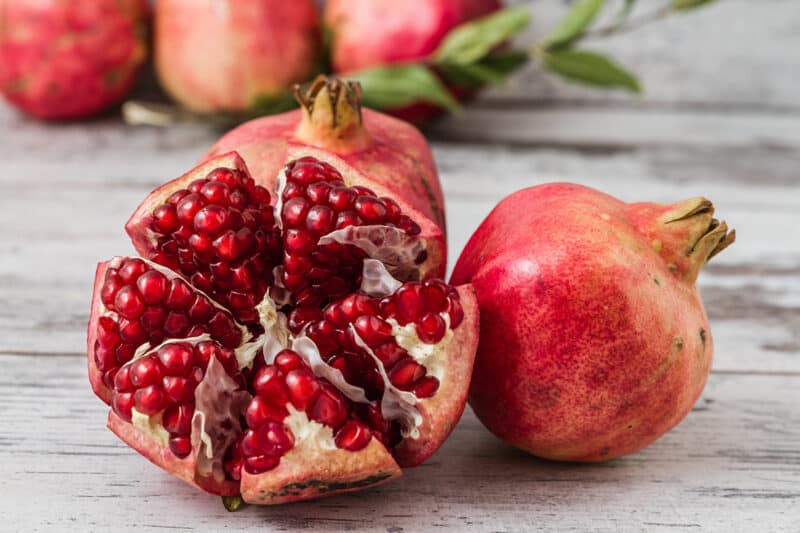
The goal is to cut through the skin and into the membrane, but not all the way through the fruit.
Pull out each section and peel away any remaining membrane. Sometimes it’s easier to pull the fruit in half and then divide it further.
Turn each section inside out over a bowl, pushing the center of each section out and pulling the ends in towards you. Some of the seeds will fall out, but you’ll need to encourage the others by rubbing them.
When you’re done, you’ll have a marvelous bowl full of little red jewels ready to eat.
Whatever method you choose, remember that pomegranate juice will stain. Don’t seed your pomegranate anywhere near carpets, rugs, or while wearing clothes that you don’t want to risk getting stained.
Eating Pomegranates
Now for the best part! After you pick and seed your pomegranate, it’s time to dig in.
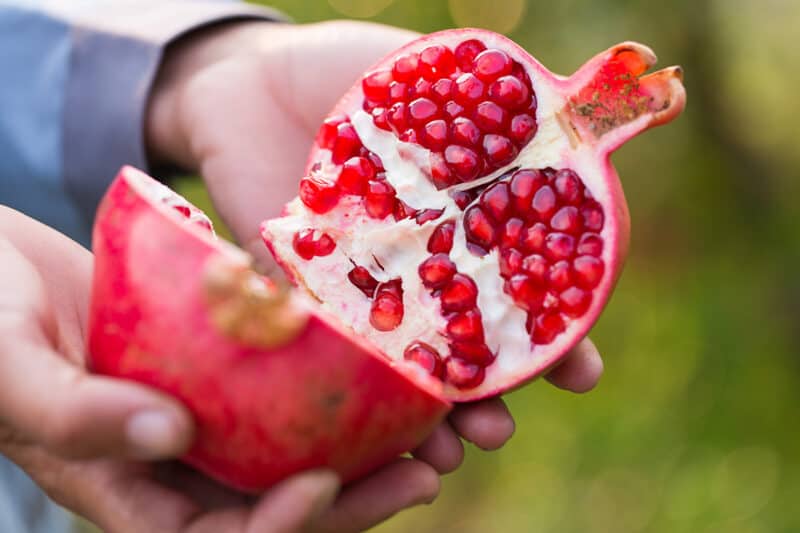
Obviously, you can eat the seeds raw. Lots of people also like to add them to yogurt, ice cream, salad, or desserts.
But don’t be afraid to get creative. Pomegranate seeds are perfect for savory dishes. Toss them with Brussels sprouts in olive oil and bake in the oven.
They’re also incredible added as a topping to pizza or flatbread. Next time you make a lamb dish, top it with some pomegranate seeds. The two complement each other perfectly.
If it’s the juice you’re after, put all the seeds in a zip-top bag and roll a rolling pin or pound with a meat tenderizer to release all the juice.
Strain out the leftover seeds through a strainer.
If you have an unbruised, uncracked pomegranate, you can slice it in half and squeeze it in a handjuicer, as well.
Storing Pomegranates
For a fruit, pomegranates store a good long while after harvest. They’re similar in storage capacity to apples.
As a bonus, the fruits tend to get juicier in storage, though you don’t want to wait too long.
Stick them in a refrigerator or cold storage for up to seven months, given consistent temperature between 32-41°F and low humidity. If temps fluctuate (as they tend to do when you open and close a refrigerator), expect them to last closer to three months.
For those areas that have higher humidity, they’ll store a month or two.
Once the skin starts turning brown or wrinkles, it’s time to eat them!
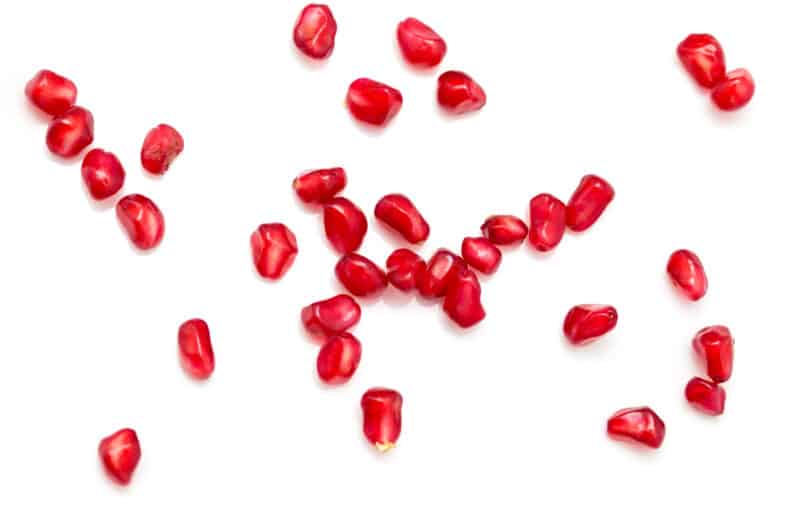
If you’ve seeded your fruits, the arils store in the fridge for up to a week. You can also freeze them for up to a year.
To freeze, place them in a zip-top bag and press out all the air. Then, place them in the freezer where they won’t get crushed as they harden.
The juice can store in the refrigerator for up to five days.
Don’t store the juice or arils in a metal container. The fruit is acidic and it will react to the metal.
